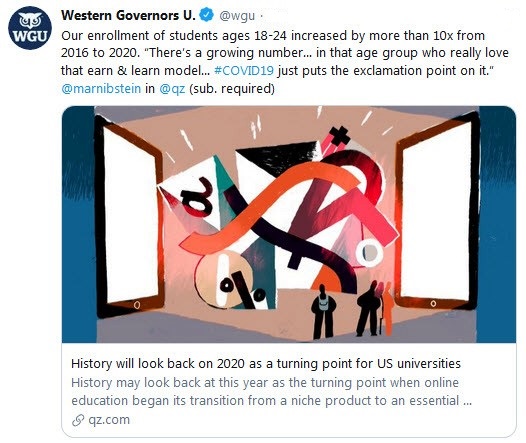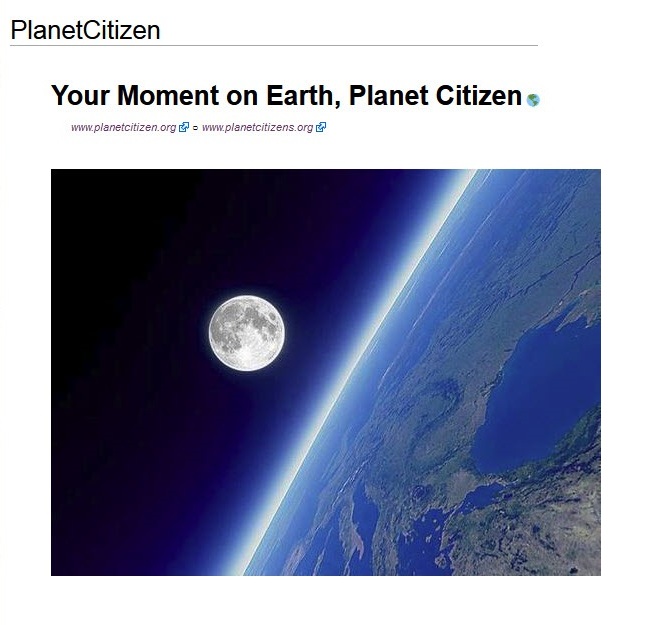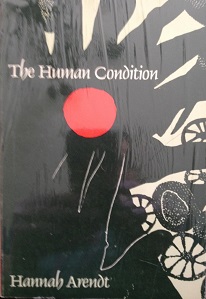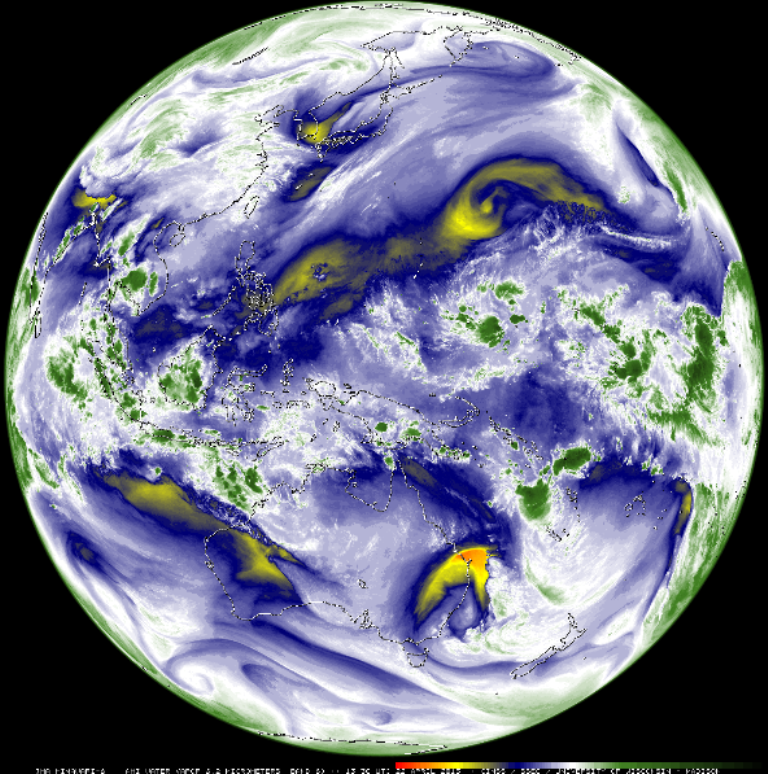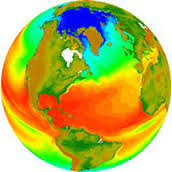Green Education: Difference between revisions
Siterunner (talk | contribs) No edit summary |
Siterunner (talk | contribs) No edit summary |
||
| Line 208: | Line 208: | ||
Turning hydrogen into liquid fuel... | Turning hydrogen into liquid fuel... | ||
This process could represent the biggest change in how fuel for planes, ships, trains and trucks is made since the first internal combustion engine fired up in the 19th century. In his 1874 science fiction novel “The Mysterious Island,” Jules Verne predicted that “water will be the coal of the future.” This plant, one of the first in the world to transform water into fuel, shows what that looks like on the ground today. | Per the Wapo: ''This process could represent the biggest change in how fuel for planes, ships, trains and trucks is made since the first internal combustion engine fired up in the 19th century. In his 1874 science fiction novel “The Mysterious Island,” Jules Verne predicted that “water will be the coal of the future.” This plant, one of the first in the world to transform water into fuel, shows what that looks like on the ground today.'' | ||
Experts say that for green hydrogen to be truly clean, it has to be made at a plant hooked up to its own dedicated wind turbines and solar panels, or follow strict rules for using newly added renewable electricity from the grid. Federal officials are setting clean power rules that will decide which hydrogen plants qualify for billions of dollars in tax credits. | ''Experts say that for green hydrogen to be truly clean, it has to be made at a plant hooked up to its own dedicated wind turbines and solar panels, or follow strict rules for using newly added renewable electricity from the grid. Federal officials are setting clean power rules that will decide which hydrogen plants qualify for billions of dollars in tax credits.'' | ||
Although cars and light trucks are shifting to electric motors, other forms of transport will likely rely on some kind of liquid fuel for the foreseeable future. Batteries are too heavy for planes and too bulky for ships. Extended charging times could be an obstacle for long-haul trucks, and some rail lines may be too expensive to electrify. Together, these vehicles represent roughly half of emissions from transportation, the fourth-biggest source of greenhouse gases. | ''Although cars and light trucks are shifting to electric motors, other forms of transport will likely rely on some kind of liquid fuel for the foreseeable future. Batteries are too heavy for planes and too bulky for ships. Extended charging times could be an obstacle for long-haul trucks, and some rail lines may be too expensive to electrify. Together, these vehicles represent roughly half of emissions from transportation, the fourth-biggest source of greenhouse gases.'' | ||
To wean machines off oil, companies | ''To wean machines off oil, companies ... are starting to churn out hydrogen-based fuels that — in the best case — produce close to net zero emissions. They could also pave the way for a new technology, hydrogen fuel cells, to power planes, ships and trucks in the second half of this century. For now, these fuels are expensive and almost no one makes them, so the U.S. government, businesses and philanthropists including Bill Gates are investing billions of dollars to build up a hydrogen industry that could cut eventually some of the most stubborn, hard-to-remove carbon pollution.'' | ||
Most scenarios for how the world could avoid the worst effects of climate change envision hydrogen cleaning up emissions in transportation, as well as in fertilizer production and steel and chemical refining. | ''Most scenarios for how the world could avoid the worst effects of climate change envision hydrogen cleaning up emissions in transportation, as well as in fertilizer production and steel and chemical refining.'' | ||
:[[File:ClimateNews 360.jpg]] | |||
< | <small>* https://www.greenpolicy360.net/w/Too_Hot</small> | ||
GreenPolicy360: So, in 2024 we are at the front of a water/hydrogen option for the climate problem. It's one many solutions to the fossil fuels era. The problems and solutions question is today and in front of us. It's our choice where we're going and how to navigate to get there. | |||
The stakes are literally those of a Living Earth... | |||
Carry on Planet Citizens! | |||
<big><big>'''[[Climate Problems, Climate Solutions]]'''</big></big> | |||
: | * https://greenpolicy360.net/w/Climate_Problems,_Climate_Solutions | ||
[[ | 🦠 <big><big>'''[[Earth Science Vital Signs]]'''</big></big> | ||
* https://www.greenpolicy360.net/w/Earth_Science_Vital_Signs | |||
* https://www.greenpolicy360.net/w/New_Definitions_of_National_Security | |||
[[File:Earth - Pacific Ocean.png]] | |||
| Line 252: | Line 255: | ||
<big><big>'''[[Generation Green]]''' </big></big> | <big><big>'''[[Generation Green]]''' </big></big> | ||
Young and old, in every nation, across every continent, and in every community | Young and old, in every nation, across every continent, and in every community | ||
: Eyes Open, Listen, Think, and [https://www.greenpolicy360.net/w/Planet_Citizen_Action '''Act to Make a Positive Difference'''] | |||
| Line 275: | Line 275: | ||
:: ''[[Earth Right Now]]'' | :: ''[[Earth Right Now]]'' | ||
Revision as of 15:14, 27 June 2024
- Green Eco-Education
- https://greenpolicy360.net/w/Earth_Science_Eco-Fields | Earth Science Eco-Fields
- https://www.greenpolicy360.net/w/Category:Ecology_Studies | Ecology Studies
- http://www.greenpolicy360.net/w/Environmental_Studies_Online | Eco-Education Online
- https://greenpolicy360.net/w/Category:Online_Education | Online Education
- https://greenpolicy360.net/w/Lawrence_University,_WI_%22Green_Roots%22 | Lawrence University, a 'Green Roots' University
Our education begins with family and soon relatives, friends, teachers and educators arrive and begin to assist us in so many ways. They will share stories, and visions, sometimes of values to live by... This is where and how green ideas come into our lives. The understanding of nature is one of these lessons. Another lesson, ongoing we find out, is about creativity, about dreamers and doers, those who make a difference, a positive difference every day, working hard, working with a purpose. This a world of education that GreenPolicy360 brings forward here with an initial Table of Contents. It's a beginning guide to exploring GreenPolicy360.
Your GreenPolicy360 siterunner joins in now and thanks the 'influencers' in his life, mainly good, some bad, those real-life experiences that each of us have that teach us as we go on our life journeys. As the saying goes, "I thank my lucky stars" for the special influencing moments, the extraordinary educators, the shining stars who enlightened me. The road traveled was memorable, especially due to my teachers.
Today, after many years of travels and experiences, and inspiring art, ideas and those who taught me about thinking and how to think, and great books, I am here to say that all us at GreenPolicy are 'into' education, learning and sharing, growing -- and improving. Whether for personal reasons and/or to meet economic challenges, we are here together with this eOS/eco Operating System to bring history, politics and future possibilities into our day-to-day lives.
GreenPolicy360's mix is an education that imbues lifelong learning. Welcome along for the adventure.
A case study: "My friend George" (who became a lifelong colleague and teacher) -- read of Rep. George E. Brown, (D), East Los Angeles, who changed the world (and your GreenPolicy360 founder's life)
We hope our green visitors, young and old from around our world, in every community from villages to big city high rises, find value here everyday in myriad ways.
We even see Green education as sort of like the movie "Being There" , where the writer Jerzy Kosinski introduces a gardener, Chance (Chauncey) who brings his understanding of the life of plants, soil and water, seasons and nature, life and a living earth into business and politics. Surprises beyond satire bloom.
Green education is like an interactive network. We are nodes of learning shared like an online university. We are 'distance learning' like a Virtual University our Siterunner helped start, now called the WGU.edu and networking in every community connected to the Internet.
A wise WGU mascot owl looks on...
Take a look now at how STEM education has become a STEAM with arts, adding vast creative input to scientific/tech/engineering/math endeavors. The addition of art ideas, imagination, wisdom, ethics, with goals of greening economies across the Earth brings a game-changing future.
🦉
USCoC: From architecture to automotives and fashion design to product design, student creators and innovators are designing a better and more sustainable future. Science, Technology, Engineering, Arts, and Mathematics (STEAM) disciplines underpin essentially all industries, and they drive the intellectual property (IP)-intensive industries that account for over 41% of U.S. gross domestic product and employ one- third of America’s total workforce.
All too often, creative contributions to industries like manufacturing, architecture, transportation, and agriculture are severely overlooked. Yet, without artists, designers, and other creative minds, the world wouldn’t have the sleek look of American muscle cars, iconic structures like the Empire State Building, or innovative products like smart watches.
Many universities and colleges offer a variety of programs for these creators to hone their skills and learn more about related industries. For example, Detroit’s College for Creative Studies (CCS) offers courses and degrees in advertising design, animation, art education, art practice, communication design, color and materials design, crafts and material studies, entertainment arts, graphic design, interaction design, motion design, concept design, design for sustainability, entertainment arts, fashion and fashion accessories design, film, game design illustration, interdisciplinary art + design, interior design, photography, product design, textiles, fine art, glass, metalsmithing and jewelry, painting, printmaking, sculpture, transportation design, user experience design, and visual development.
Who knew there is such a wide variety of employment options across a range of different industries? Creators aren’t limited to—the equally important—traditional roles associated with music, film, television, painting, sculpting, writing, or theater. (GreenPolicy360 knew)
There are so many possibilities for creators to reinvent industries toward a more sustainable future. The latest and greatest high-tech projects and products certainly provide consumers, creators, and innovators with state-of-the-art options. From high-efficiency doors and windows to electric agricultural vehicles and cleaner manufacturing systems, advanced innovations offer a wide range of solutions for an environmentally friendly future.
(The US Chamber of Commerce is evidently 'going green')
Beginnings of the 'Modern Environmental Movement'
- https://greenpolicy360.net/w/Earthrise | "Earthrise"
- https://www.greenpolicy360.net/w/Planet_Earth_Perspective | Planet Earth Perspective
- http://www.thinbluelayer.com | "Thin Blue"
- http://www.earthpov.com | EarthPOV.com
- https://www.greenpolicy360.net/w/@Earth360 | Earth360
Planet Citizen Vision of Living Earth
- https://www.greenpolicy360.net/w/Earth_Day | Earth Day
- https://www.greenpolicy360.net/w/Environmental_movement | Environmental Movement
- https://www.greenpolicy360.net/w/Climate_Change_-_Global_Warming_Keyword-Terms | Climate Terms
- https://www.greenpolicy360.net/w/It%27s_All_Related | It's All Related
- http://www.planetcitizen.org | Planet Citizen
- http://www.planetcitizens.org | Planet Citizens
- https://greenpolicy360.net/w/Planet_Citizens,_Planet_Scientists | Planet Citizens, Planet Scientists
- https://greenpolicy360.net/w/File:EarthScience_Missions_via_the_EOS_-_2022.png | Earth Observing System
"Earth Day Is Every Day and Every Day Is Earth Day"
- https://www.greenpolicy360.net/w/GreenLinks | GreenLinks
- https://greenpolicy360.net/w/GTN_GreenLinks_Trending_News | GTN Green Trending News
- http://www.greenpolicy360.net/w/Book_Reviews_@GreenPolicy | GRN360 Book Reviews
- http://www.greenpolicy360.net/w/BigPicture_Media | GRN360 Film/Media
"Vita contemplativa to Vita activa"
* https://greenpolicy360.net/w/File:The_Human_Condition_-_Hannah_Arendt.jpg
* https://www.greenpolicy360.net/w/File:Life_of_the_Mind_2.png
About GreenPolicy360
* https://www.greenpolicy360.net/w/About_Us
* https://greenpolicy360.net/w/File:On_the_road_sjs.jpg
* https://greenpolicy360.net/w/File:Above.png
Water, water, life...
Speaking of water... H2O
Let's look ahead at solutions to the Climate Crisis
Out climate-related education work started in the late 1960s/early 70s in California which faced some of the planet's worst (internal combustion engine produced) air pollution. A Congressman from the center of the 'smog' led Clean Air Act efforts, that became national with the first legislation to address atmospheric pollution and warming. The National Climate Program Act, drafted by Rep. George E. Brown can be considered a beginning of US government efforts to deal with climate change.
The environmental protection efforts, as GreenPolicy360 documents, have continued with increasing importance into the 21st century.
Today, the citizens and nations of Planet Earth are looking to new technologies and ways to decrease the impacts of atmospheric pollution (CO2/GHG hydrocarbon emissions) and as GreenPolicy360 speaks of the planet being a watery world (approximately 71% water, let's talk about water as a fuel, instead of carbon, heat-producing emissions of oil/gas sources of energy, especially in transportation.
Let's focus in water/hydrogen and look at one of the new hydrogen fuel production plants
🌎
Read a (free/without paywall) June 2024 article in the Washington Post
CLIMATE LEAP
How water could be the future of fuel
- A new generation of fuels could power planes and ships without warming the planet
Turning hydrogen into liquid fuel...
Per the Wapo: This process could represent the biggest change in how fuel for planes, ships, trains and trucks is made since the first internal combustion engine fired up in the 19th century. In his 1874 science fiction novel “The Mysterious Island,” Jules Verne predicted that “water will be the coal of the future.” This plant, one of the first in the world to transform water into fuel, shows what that looks like on the ground today.
Experts say that for green hydrogen to be truly clean, it has to be made at a plant hooked up to its own dedicated wind turbines and solar panels, or follow strict rules for using newly added renewable electricity from the grid. Federal officials are setting clean power rules that will decide which hydrogen plants qualify for billions of dollars in tax credits.
Although cars and light trucks are shifting to electric motors, other forms of transport will likely rely on some kind of liquid fuel for the foreseeable future. Batteries are too heavy for planes and too bulky for ships. Extended charging times could be an obstacle for long-haul trucks, and some rail lines may be too expensive to electrify. Together, these vehicles represent roughly half of emissions from transportation, the fourth-biggest source of greenhouse gases.
To wean machines off oil, companies ... are starting to churn out hydrogen-based fuels that — in the best case — produce close to net zero emissions. They could also pave the way for a new technology, hydrogen fuel cells, to power planes, ships and trucks in the second half of this century. For now, these fuels are expensive and almost no one makes them, so the U.S. government, businesses and philanthropists including Bill Gates are investing billions of dollars to build up a hydrogen industry that could cut eventually some of the most stubborn, hard-to-remove carbon pollution.
Most scenarios for how the world could avoid the worst effects of climate change envision hydrogen cleaning up emissions in transportation, as well as in fertilizer production and steel and chemical refining.
* https://www.greenpolicy360.net/w/Too_Hot
GreenPolicy360: So, in 2024 we are at the front of a water/hydrogen option for the climate problem. It's one many solutions to the fossil fuels era. The problems and solutions question is today and in front of us. It's our choice where we're going and how to navigate to get there.
The stakes are literally those of a Living Earth...
Carry on Planet Citizens!
Climate Problems, Climate Solutions
Young and old, in every nation, across every continent, and in every community
- Eyes Open, Listen, Think, and Act to Make a Positive Difference
- About Us
- Agriculture
- Alternative Agriculture
- Anthropocene
- Biodiversity
- Climate Change
- Climate Policy
- Earth360
- EarthPOV
- Earth Day
- Earth Imaging
- Earth Law
- Earth Science
- Earth System Science
- Ecology Studies
- Education
- Energy
- Environmental Laws
- Global Warming
- GreenPolicy360
- Green Politics
- Green Values
- Nature
- Online Education
- Planet Citizen
- Planet Citizens
- Planet Citizens, Planet Scientists
- Renewable Energy
- Rights of Nature
- Strategic Demands
- Sustainability
- Sustainability Policies
- Water
- Whole Earth
- Youth

